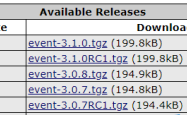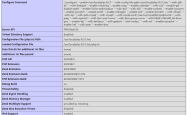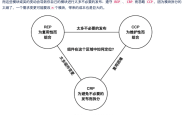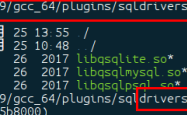PHP实现LRU算法的原理详解
吾爱主题
阅读:330
2022-11-04 14:51:00
评论:0
1.概念
LRU : 最近最少使用算法
2.代码
?| 1 2 3 4 5 6 7 8 9 10 11 12 13 14 15 16 17 18 19 20 21 22 23 24 25 26 27 28 29 30 31 32 33 34 35 36 37 38 39 40 41 42 43 44 45 46 47 48 49 50 51 52 53 54 55 56 57 58 59 60 61 62 63 64 65 66 67 68 69 70 71 72 73 74 75 76 77 78 79 80 81 82 83 84 85 86 87 88 89 90 91 92 93 94 95 96 97 | <?php class Node { public $preKey = null; //链表前一个节点 public $nextKey = null; //链表后一个节点 public $key = null; //当前的值 public $value = null; //当前key public function __construct( $key , $value ){ $this ->key = $key ; $this ->value = $value ; } public function setPre( $preKey ) { $this ->preKey = $preKey ; } public function setNext( $nextKey ) { $this ->nextKey = $nextKey ; } } class LRUCache{ public $cacheTable = []; /** Node null */ private $headNode = null; private $lastNode = null; private $cacheCount = 0; private $cacheMax = 3; public function addNode( $key , $value ) //此处采用头插法 { $addNode = new Node( $key , $value ); if ( ! empty ( $this ->headNode)) { $this ->headNode->preKey = $addNode ; //如果链表存在,将节点添加到节点前一个 } $addNode ->nextKey = $this ->headNode; //第一次保存最后一个节点为头结点 if ( $this ->lastNode == null){ $this ->lastNode = $addNode ; } $this ->headNode = $addNode ; $this ->cacheTable[ $key ] = $addNode ; $this ->cacheCount++; } public function set( $key , $value ) { //先判断是否需要删除 $this ->shiftNode(); $this ->addNode( $key , $value ); return true; } //自动删除 public function shiftNode() { while ( $this ->cacheCount >= $this ->cacheMax){ if (! empty ( $this ->lastNode)){ if ( $this ->lastNode->preKey){ $this ->lastNode->preKey->nextKey = null; $this ->lastNode = $this ->lastNode->preKey; } unset( $this ->cacheTable[ $this ->lastNode->key]); } $this ->cacheCount --; } } public function dumpAllData() { $node = $this ->headNode; while (( $node )){ echo "key=" . $node ->key. "value=" . $node ->value. "\n" ; $node = $node ->nextKey; } } } $Cache = new LRUCache(); $Cache ->set( "a" , "aaaaaaaaaaa" ); $Cache ->set( "b" , "bbbbbbbbbbb" ); $Cache ->set( "c" , "ccccccccccc" ); $Cache ->set( "d" , "dddddddddddd" ); $Cache ->set( "e" , "eeeeeeeeeeee" ); //$Cache->set("f","ffffffffffff"); $Cache ->dumpAllData(); //var_dump($Cache); //是一个深度的数组(对象) |
结果
[root@VM-16-13-centos ~]# php LRU.php
key=evalue=eeeeeeeeeeee
key=dvalue=dddddddddddd
key=cvalue=ccccccccccc
总结
本篇文章就到这里了,希望能够给你带来帮助,也希望您能够多多关注服务器之家的更多内容!
原文链接:https://blog.csdn.net/kevlin_V/article/details/123764118
声明
1.本站遵循行业规范,任何转载的稿件都会明确标注作者和来源;2.本站的原创文章,请转载时务必注明文章作者和来源,不尊重原创的行为我们将追究责任;3.作者投稿可能会经我们编辑修改或补充。










